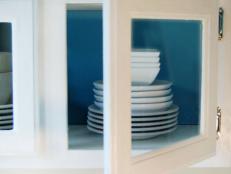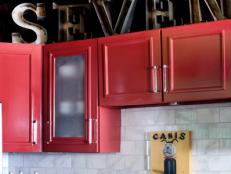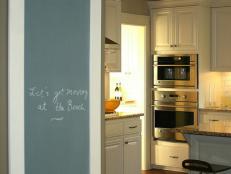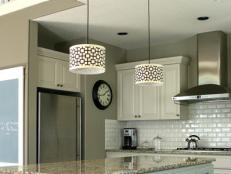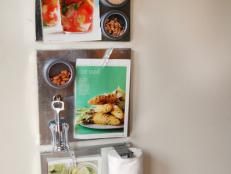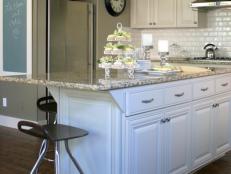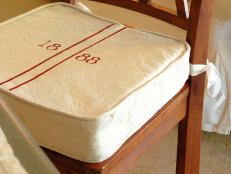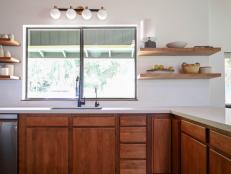Distressed and Antiqued Kitchen Cabinets

Materials Needed:
- rubber gloves
- mocha-tinted antiquing glaze (available at most home improvement stores)
- smooth cotton rags
- painters' tape
- sanding block
- 80-grit sandpaper
- small paintbrush
- spray polyurethane
Clean Cabinets
Put on a pair of rubber gloves and wipe cabinet faces with a damp rag to remove surface dirt. Let the cabinets dry completely before moving on to the next step.

Protect Walls
Use painters' tape to protect the walls around cabinets. Glaze dries slowly, so there is usually time to clean up an accidental mark, but it's better to be safe than sorry.
Sand Edges
Using a sanding block wrapped in 80-grit sandpaper, sand raised edges and corners of each cabinet door and/or opening. Sand until the wood under paint is fully exposed.
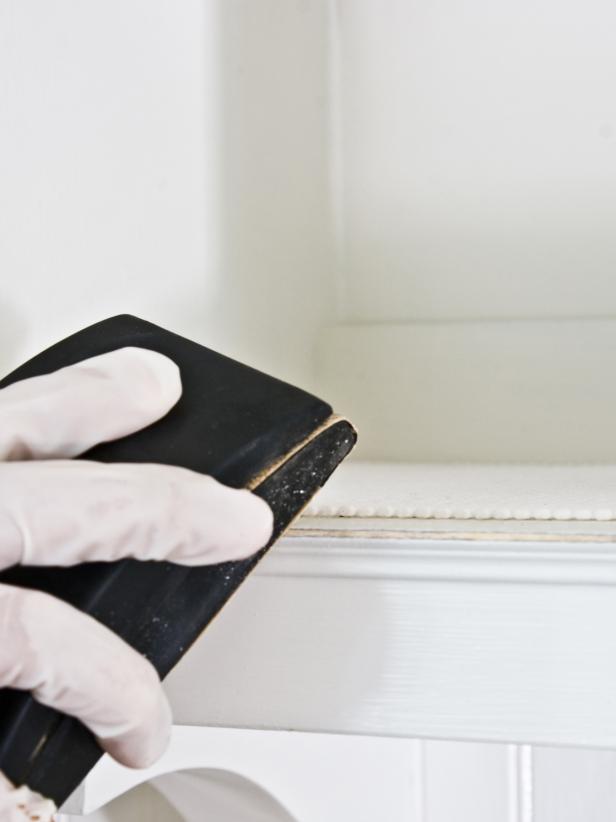
Apply Antiquing Glaze
Add a small amount of antiquing glaze to a smooth, clean rag. Begin applying the glaze to the front or side of one cabinet in small, circular motions until you've covered the entire section. Tip: A small amount of glaze will go a very long way. It's better to start with too little glaze rather than too much.
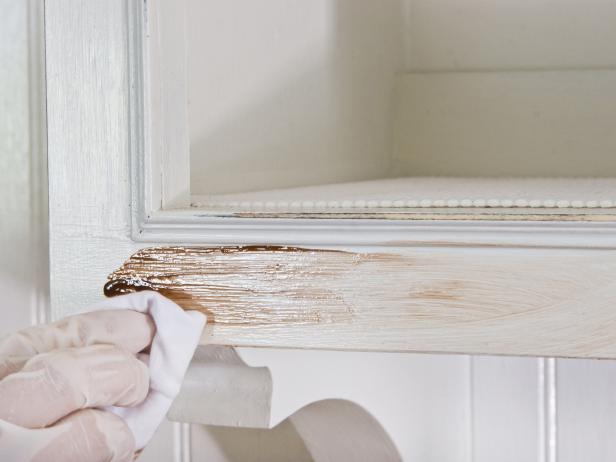
Smooth Finish
Once the entire front or side of a cabinet has been covered in glaze, use a clean area of your rag and a very light touch to smooth out all the circular marks. Gently wipe the glaze in straight up-and-down or side-to-side motion until the desired effect is achieved.
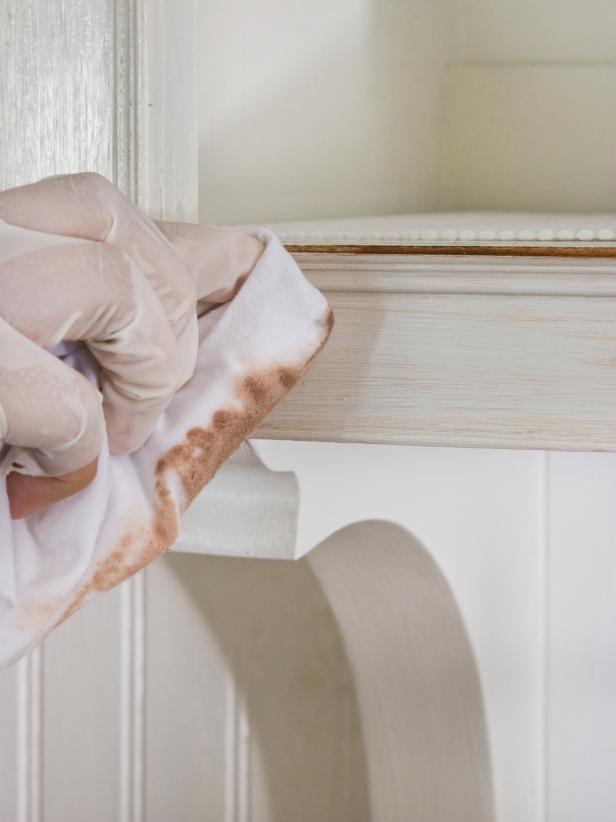
Darken Edges
Using a small brush, add more antiquing glaze to the distressed parts of the cabinets and/or doors. It's OK to apply the glaze liberally in these places because some of it will be removed in the next step.
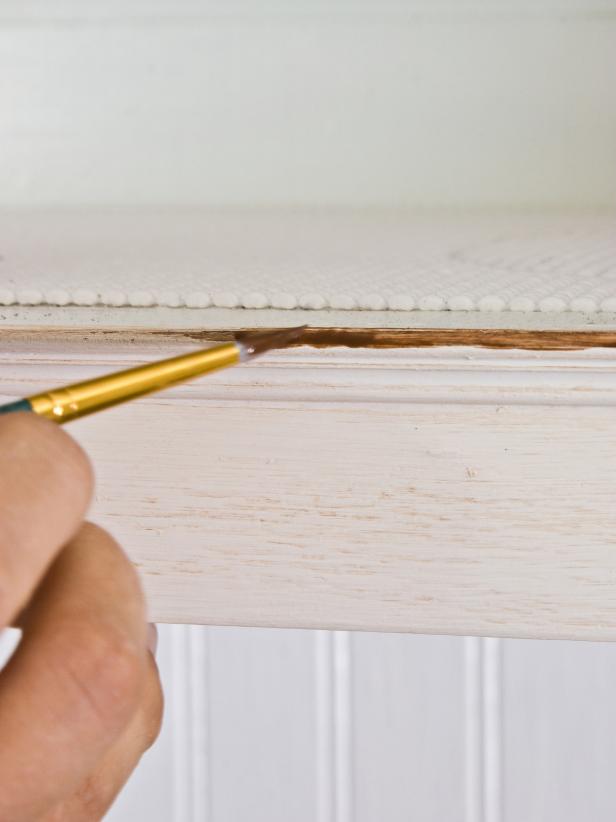
Remove Excess Glaze
Wrap a smooth, clean rag around your index finger and carefully wipe off any excess glaze that's accumulated outside of the distressed spots created in the previous step.
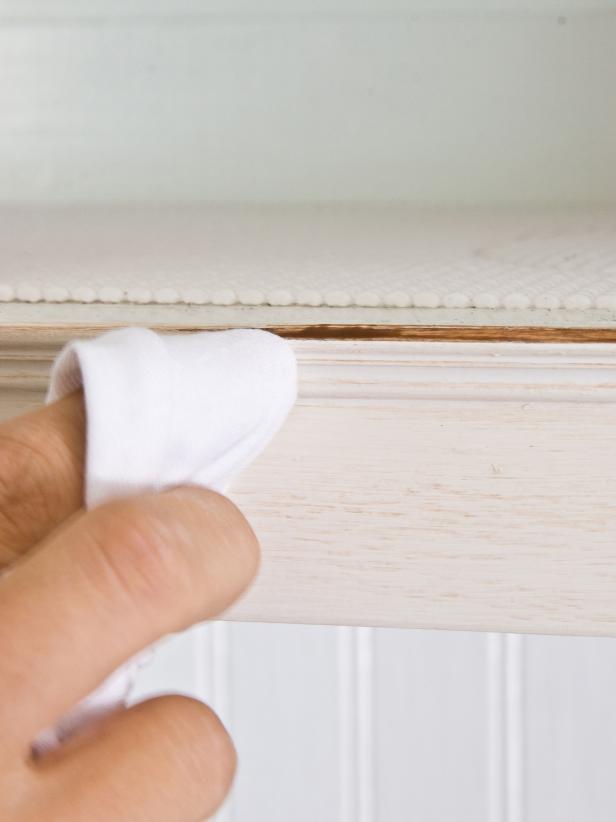
Distress Remaining Cabinets
Continue working, cabinet by cabinet, until every desired surface has been antiqued. Make sure to stand back every now and then to ensure the overall effect is consistent. When finished, let the glaze dry for at least 24 hours before sealing it.
Protect the Finish
Spray on a light coat of clear, non-yellowing sealer to protect the distressed finish from damage. Tip: It's very important to use a non-yellowing sealer as regular polyurethane will turn yellow if applied over white paint.






